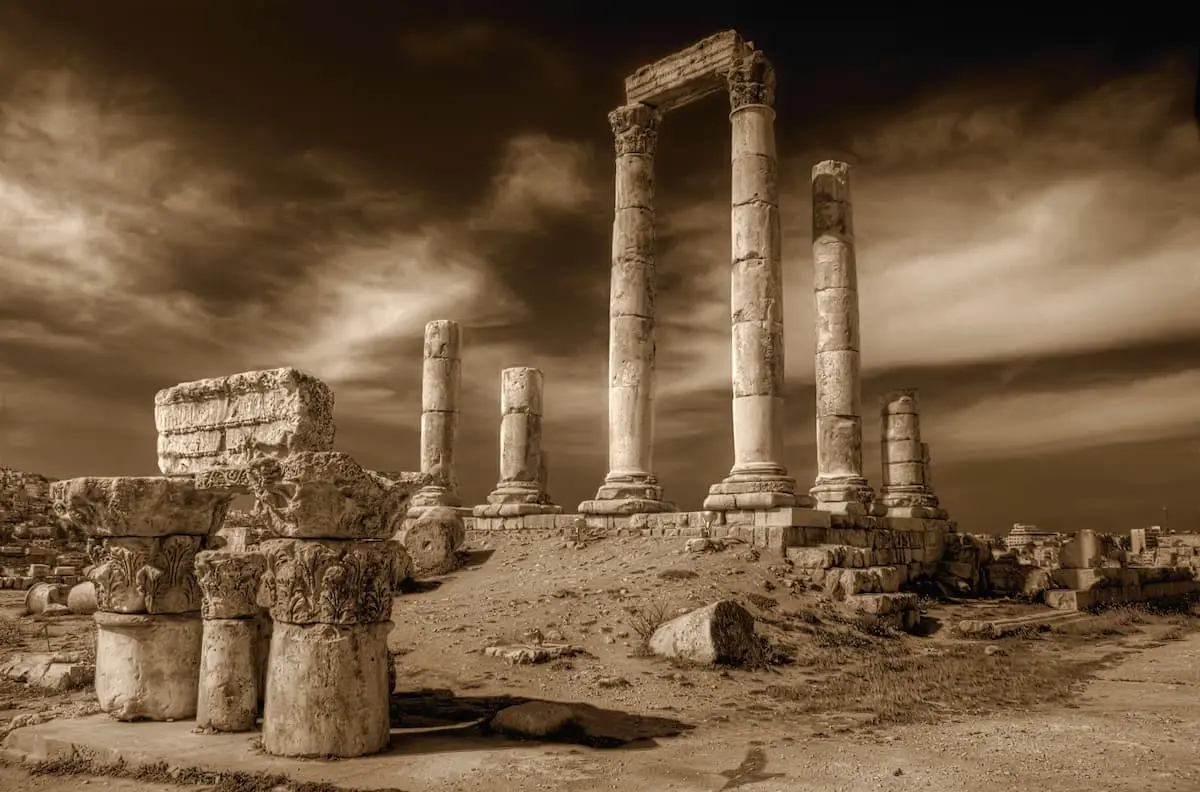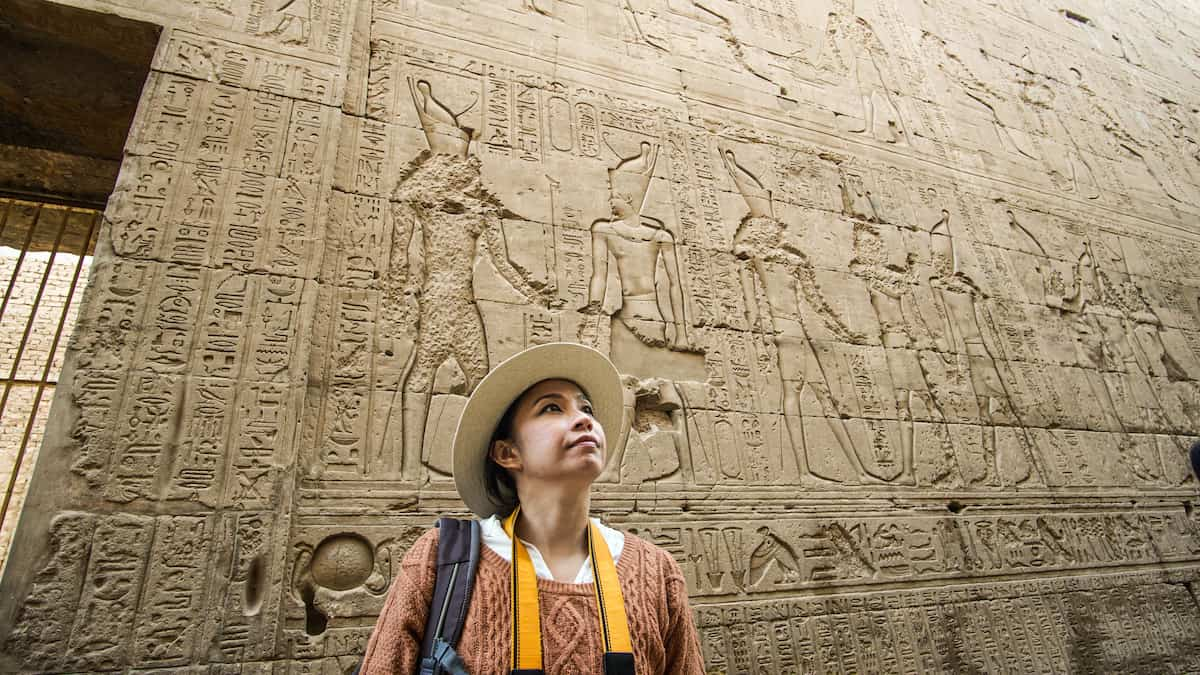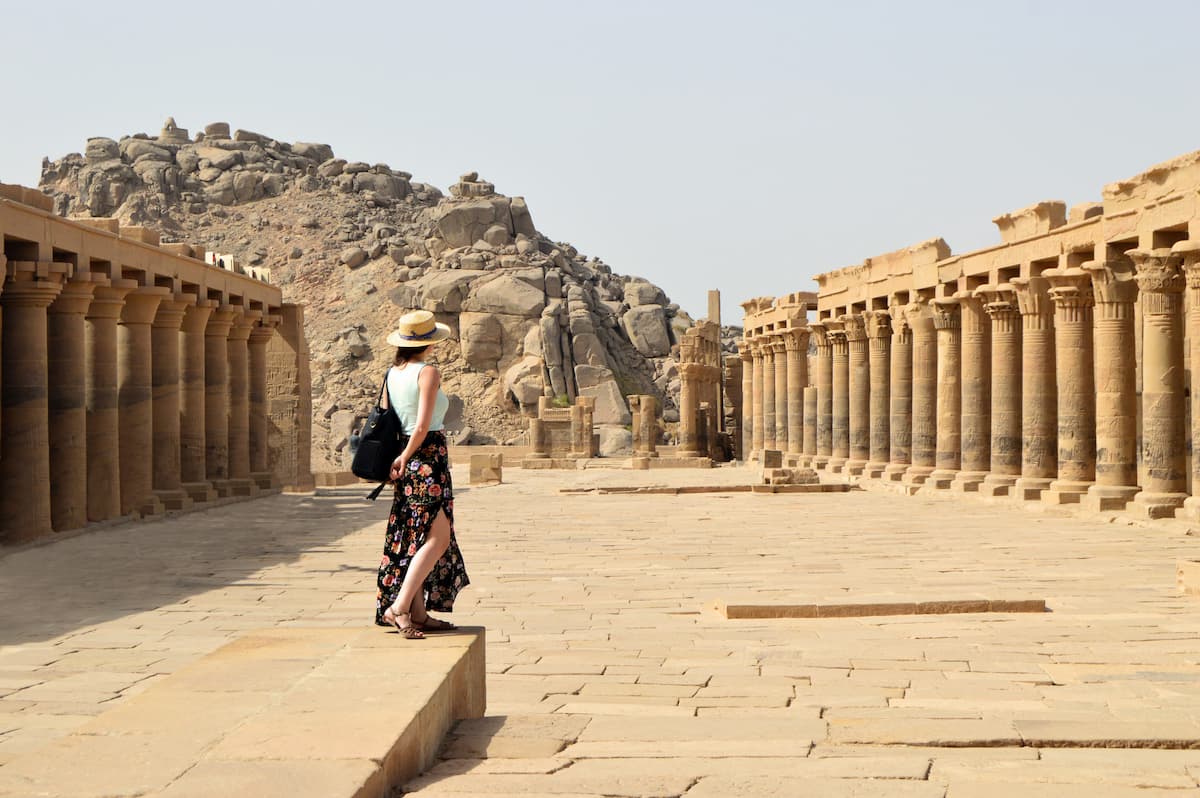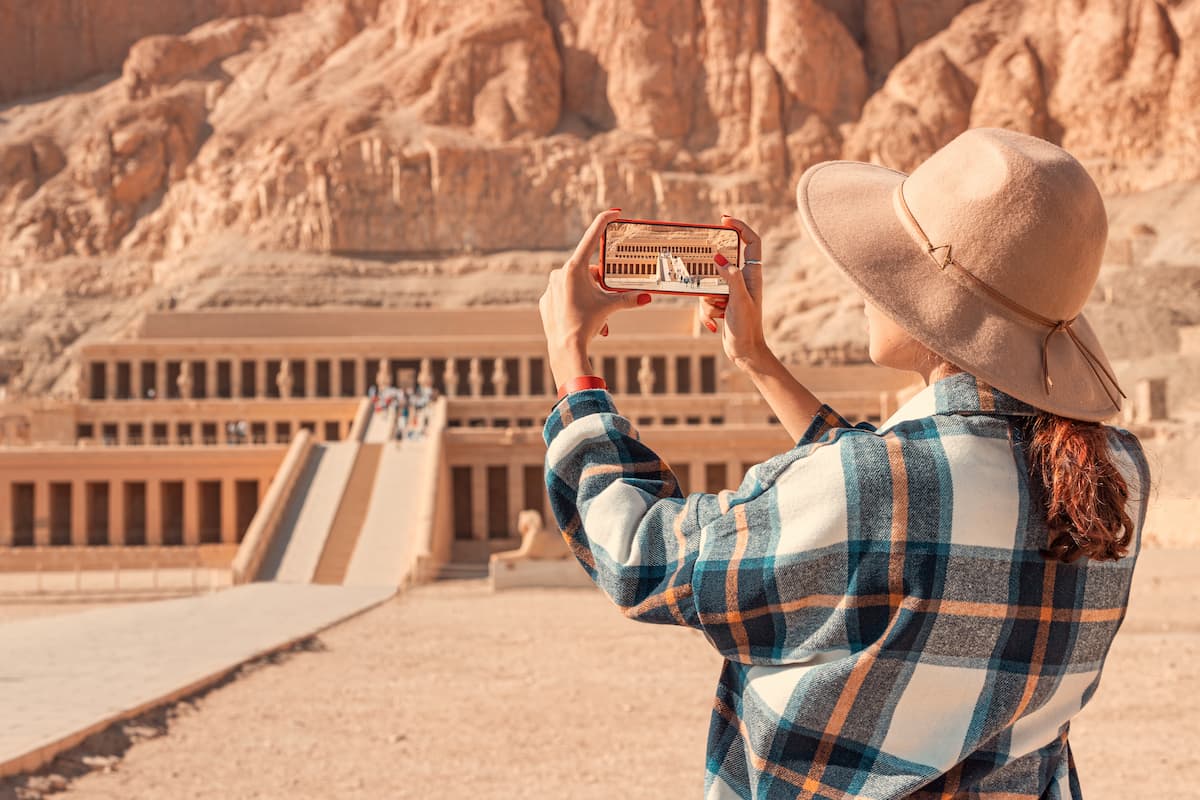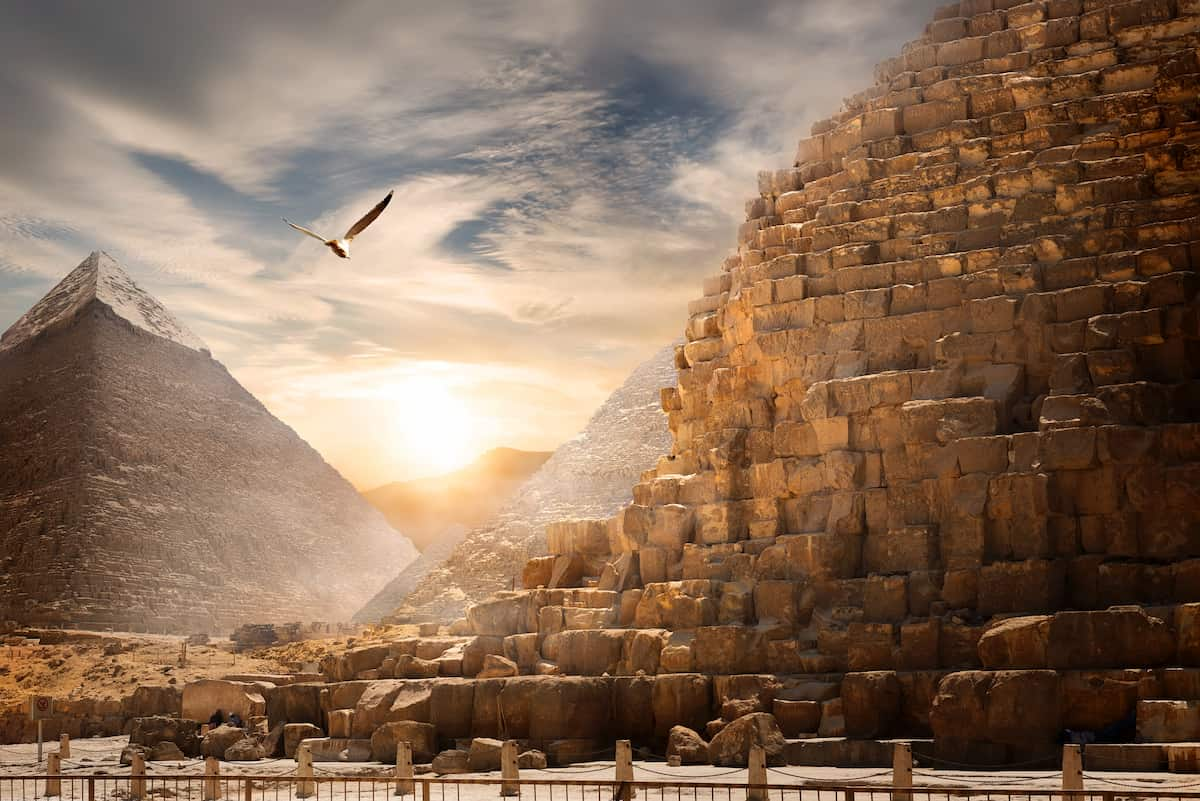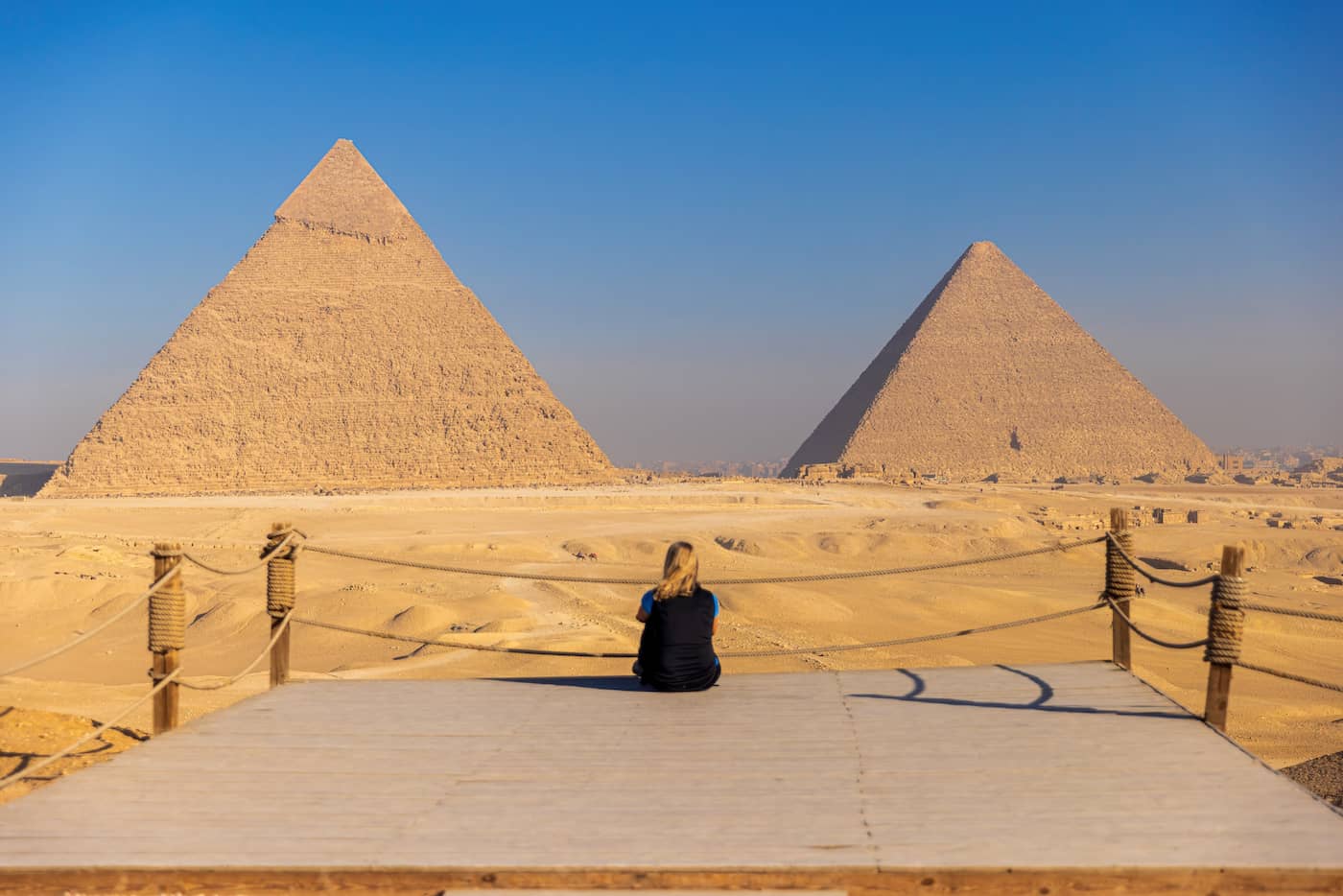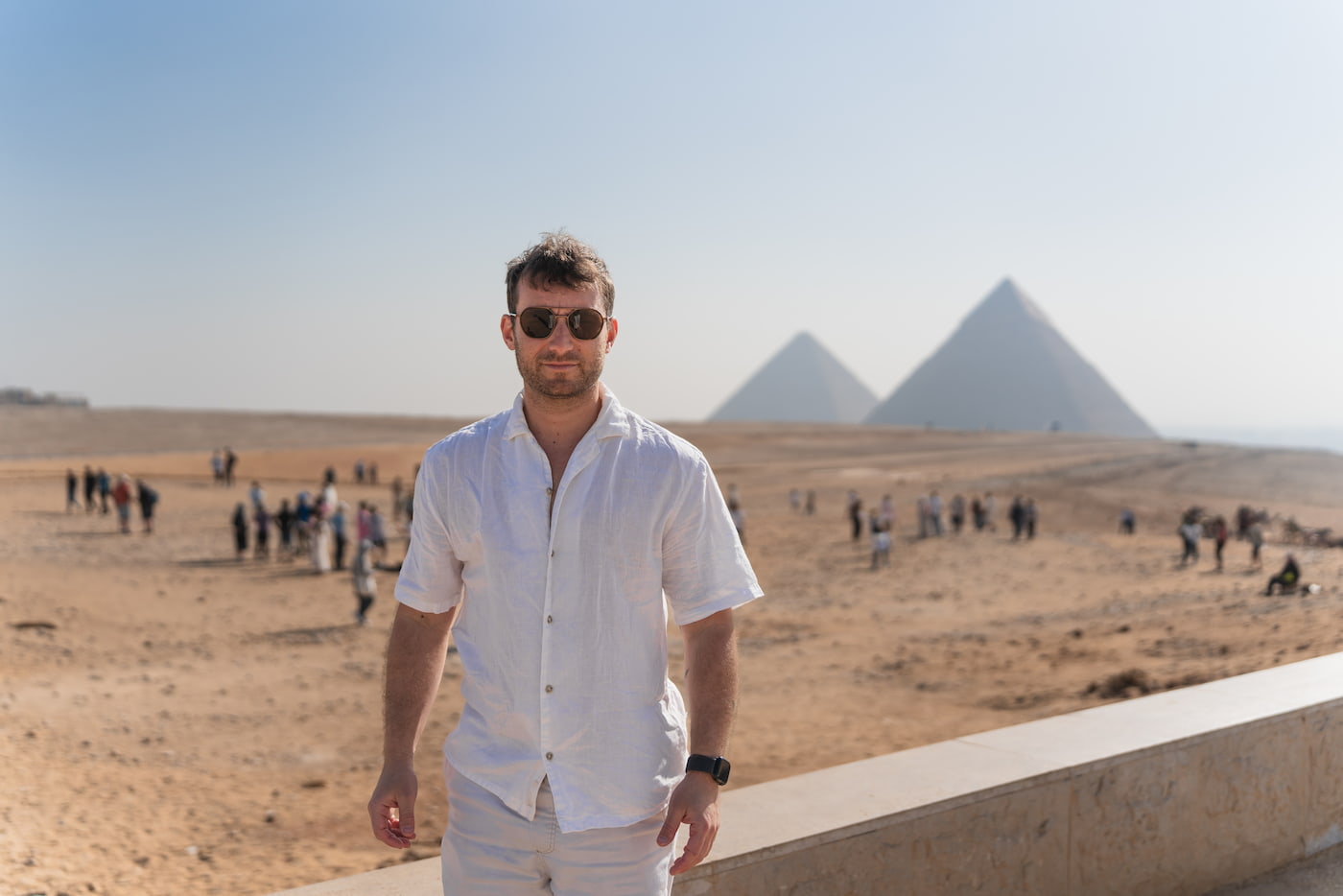Citadel Amman Jordan: A Timeless Landmark of History, Culture, and Panoramic Views
The Citadel Amman, Jordan, locally called Jabal al-Qal’a, is an iconic monument in the city. This site is placed on one of the seven hills of Amman, giving it a view of the contemporary city, which also hides countless centuries of history. Is has throusands of years of history dating back to the Bronze Age, with archaeological evidence showing that it has been inhabited since that era. This makes it one of the oldest archaeological sites in the world.
The Citadel is located in the center of Amman, and it has been used as a political and cultural center by the Romans, the Umayyads, the Byzantines and many other civilizations. The hills and valleys gave a strategic view for the Citadel, and it gave protection. For the reason of its importance it is considered a symbol of Amman’s history, and it continues to be one of the attractions to tourists who visit the city for the museums, the ancient ruins and, the views, all of which the Citadel has.
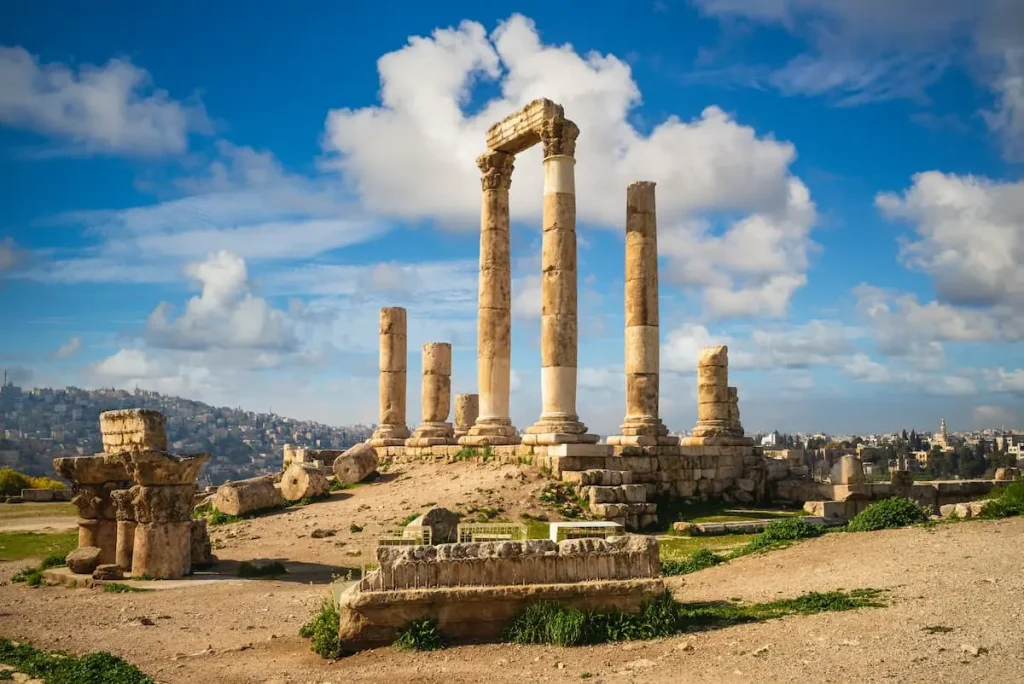
1. Historical Background of Citadel Amman, Jordan
The Citadel of Amman is located in a beautiful area with a rich history beginning in the Bronze Age, 1800 BCE. The site is important as it was continuously inhabited throughout the Iron Age and later served as the capital of the kingdom of Ammon. The Ammonite capital was known as Rabbath Ammon. The Ammonites feature in the Bible, and the site was a great Ammonite centre for both politics and religion. The Ammonite capital is the reason why the modern city of Amman bears its name.
Amman Citadel resisted relinquishing control to many ancient empires. The Romans, for example, appropriated the area, constructing temples and other buildings to leave a mark with their architecture. During the Byzantine era, the Citadel’s cultural and spiritual aspects were further enriched with the construction of new churches. The Umayyads later transformed the Citadel into an Islamic stronghold, constructing palaces and administrative buildings that demonstrated Amman’s importance in the early Muslim world.
The Citadel is a historic landmark that chronicles the history of human civilization. Over time, the place has seen human civilization’s wonders, and every remnant and object found there recites the legend of the area as the core of power and worship with the support of a civilization and community.

3. Architectural Highlights at Citadel Amman, Jordan
Set high above the city of Amman, the Citadel offers a unique journey through time with a wealth of architectural marvels that collectively form a representation of the city’s long and culturally composite past. One of its most famous monuments is the Temple of Hercules, an edifice constructed in the era of Ruler Marcus Aurelius, in the 2nd century A.C.E. Contemporary to believe only a few parts of Hercules temple has been preserved, including giant columns and a hand of a giant statue while limpening remains, the ruins exist as a telling sign of prevalence of Grand Roman architecture.
One of the dominating elements in this place, structure wise, is Umayyad Palace, a giant palace complex that dates back to the 8th century. An impressive located in the fortress the audience hall under narrow roundish vault, which is the pattern of this epoch, is one of the most well-known buildings of Qal’at al-Sharq or the Citadel. A little bit further one can observe the ruins of a Byzantine church from the 6th century with hints of a basilica plan and beautiful mosaics emphasizing the Christian heritage.
The 13th-century Ayyubid Watchtower is an important addition that emphasizes the continuous military importance of the Citadel in the medieval Islamic era. The structures are within encompassing city walls of great antiquity, in addition to colonnaded streets showcasing the diverse phases of civilization which utilized this site. It is the layering of these diverse forms of architecture that makes the ancient Citadel of Amman culturally vibrant and interesting from a historical perspective.
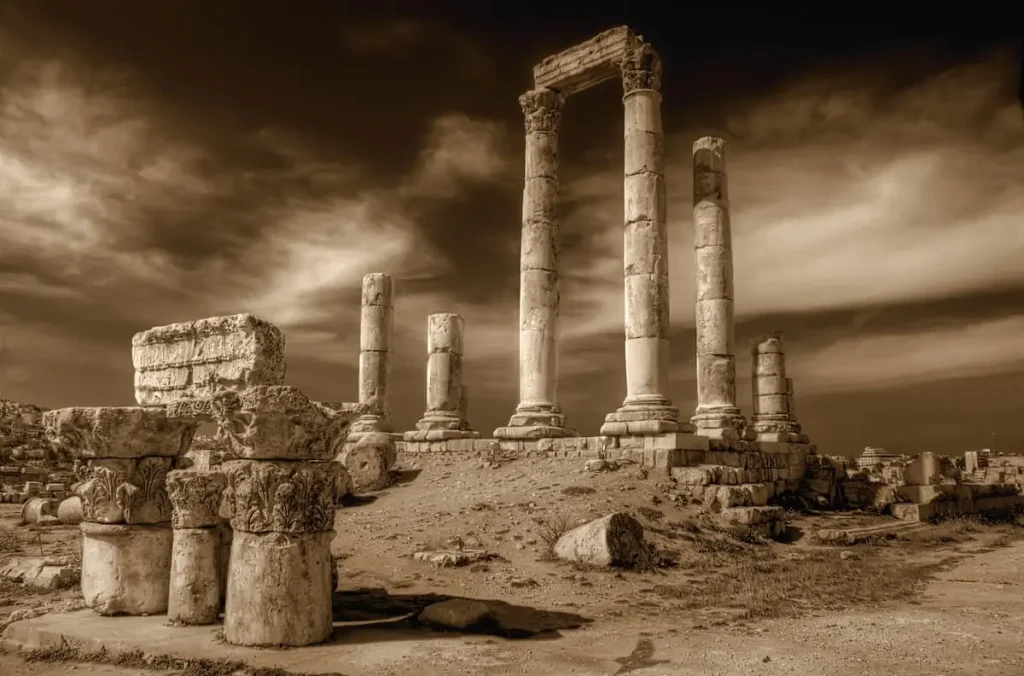
4. Archaeological and Cultural Significance of Citadel Amman, Jordan
The Citadel of Amman still stands in its full grandeur, and the beauty of its ruins tells a piece of Jordanian history with great elegance. Its archaeological layer hides many civilizations, starting from the Bronze Age and almost till the end of the Islamic era. It is called one of the most delightful places in the Middle East. In Amman, one can distinguish each single feature as Roman, Byzantine, or Umayyad, which is also love-making.
In Jordanian architecture, the Citadel is viewed as a part of a long sequence spread over the national heritage over time. The saying is true – history, which remains active, resurgent, the one that no one allows to disappear. It is a fact that the more archaeological excavations it the more information about all the above aspects of Jordan and Amman will be provided.
Moreover, the Jordan Archaeological Museum, situated within the Citadel, also enhances the value of the Karak Castle. This museum boasts a plethora of artifacts, starting from the most primitive flint tools created by men to ancient scripts and goldsmiths of Roman, Byzantine, and Muslim rulers. Hence, the site of the ruins and the artifacts in their entirety contribute to castles, comprising not only historical interest but also culture and heritage rehabilitation work.
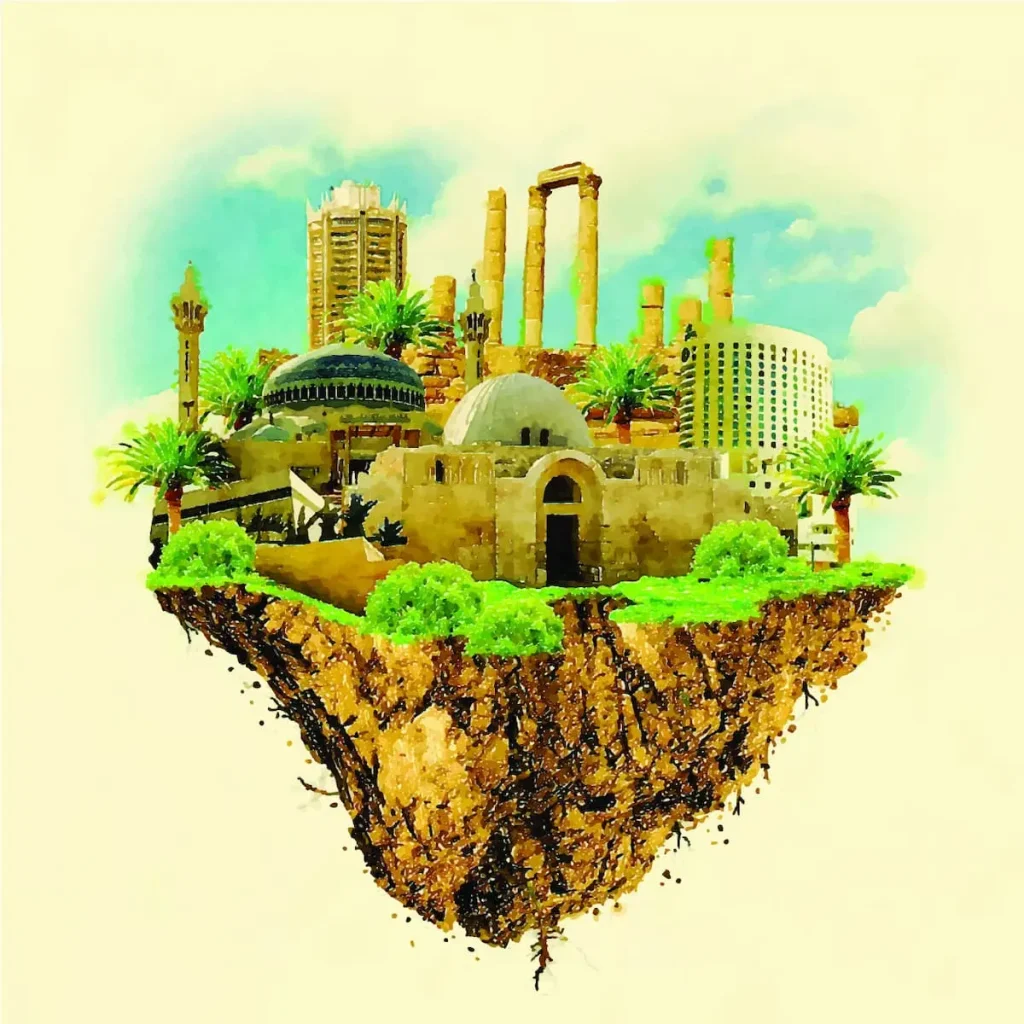
5. Visitor Experience at Citadel Amman, Jordan
Once you are physically at the Citadel Amman, Jordan you will never forget your moment there and in the same breath engage in history, culture and views. Above, the fortress is situated on a cliff known as Jabal al-Qal’a from which visitors perceive a vast section of contemporary Amman. The view is amazing in the early hours of the morning and in the evening until midnight when you reach the destination.
Have no fear as you travel within the enclosure because every architectural landmark contained within the compound emerges from the historical hodgepodge. To begin, you can see the Temple of Hercules, a marvelous structure dating to the Roman times that is truly amazing. Following that is the sight of the ancient Byzantine Christian Cathedral, which remains today to show how the early Christians lived. Next to this, the structure of an entire Islamic period is the Umayyad Palace which includes a grand audience hall that is enclosed by a massive dome.
In addition, the Citadel in Amman is well suited for families. Kids can explore and learn here safely in an open space. In case you are curious, adventures which used to be boringly shattered into powdery remains actually boil up by your side, just a few minutes away and the Jordan Archaeological Museum will take Bali out of it, filling the void with very interesting pieces from history and more.
Plan to spend about two to three hours here. Wear comfortable shoes, bring water, and don’t forget your camera. A guided tour can also enrich your understanding.
Therefore, the Citadel Amman, Jordan is not only a history but a place for a traveler which will leave unforgettable memories.
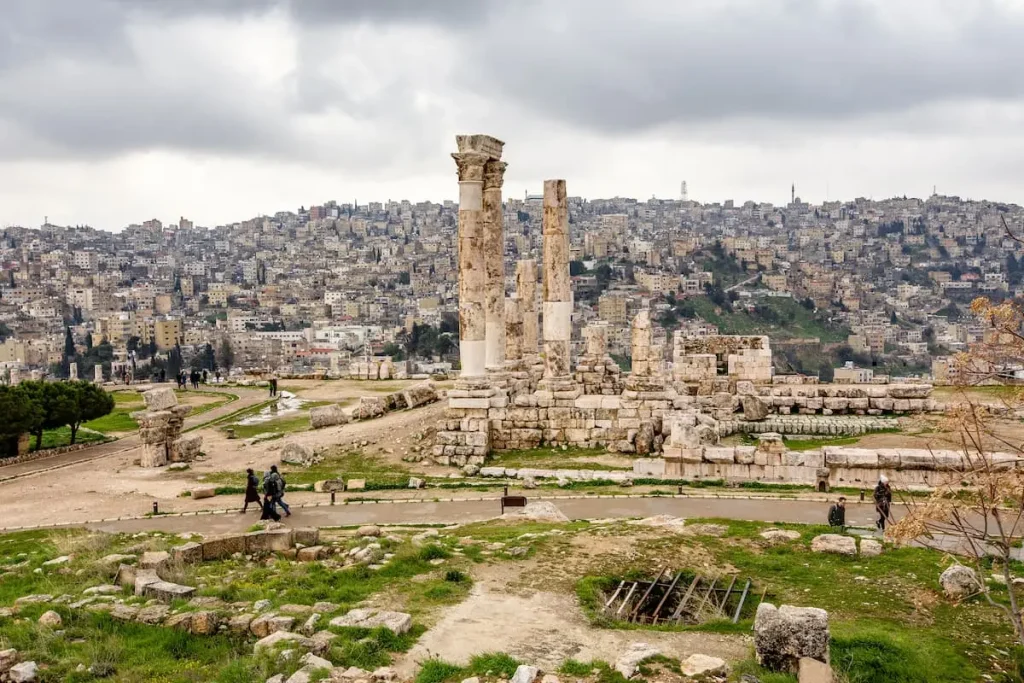
6. Practical Information for Visiting Citadel Amman, Jordan
Positioned in the central portion of Jordan’s capital, The Citadel Amman is situated atop Jabal al-Qal’a hill, which is one of the seven hills in the city. This site is perfectly located and may be comfortably reached by a taxi, by private car, or even by walking from the city center.
The schedule of visiting the site changes considerably in the course of the year. Depending on the day, one may find the site open at different hours but typically it opens early in the morning and closes with the sunset, so it’s always better to verify this information nearby before visiting. Visitors are charged a very modest ticket fee upon entering the site, and if one has the advantage of the Jordan Pass, entering the site by paying for an entrance twenty is not an option.
The best time to explore the place is in summer (March-May), followed by autumn (September-November), as the climate during those periods is nice and enjoyable. Summer in Amman can be extremely hot, while winter has its share of cloudy days and occasional cold weather.
To ensure a pleasant journey, please pay attention to the following travel suggestions. Put on low-heeled super-comfort boots for the aspect of roaming about uneven terrain. Most importantly, keep yourself refreshed with drinks, especially in case of hot weather. And last but not least, try to organize your tour for the late afternoon. As the colors resemble a reflex, the golden light is capable of taking many beautiful photographs of Amman.
In short, the Jordan Citadel of Amman is a place that is open to everyone, costs little, and is also well managed, especially if it is used.
🌍 Discover Egypt & Jordan
Begin your journey in Egypt, where the pyramids, temples, and the Nile River tell stories of an ancient civilization.
Then cross into Jordan to uncover timeless wonders such as Petra, the
Dead Sea, and the majestic Citadel of Amman.
This unique tour combines history, spirituality, and breathtaking landscapes for a once-in-a-lifetime adventure.
7. Global and Local Importance of Citadel Amman, Jordan
The Citadel of Amman, Jordan’s significance is not only global, but also local, and it is not merely a cluster of ancient ruins. On the global scale, it offers students, historians, and tourists invaluable lessons on the formations and collapses of civilizations. The strata of the site itself, ranging from the Bronze Age to the Islamic civilization, serve as an enacted tapestry of the evolution of the human spirit over time. The Citadel Harshma’s structure and content, in this regard, is very much how various traditions, as well as their practitioners, have impacted on and shaped the Middle East.
In more practical terms, owing to its centralized location, the Citadel of Amman, Jordan, plays an important role in the city and the people of the city of Amman. In the mid-section of Amman, positioned high enough to look over the surrounding concrete jungles, as one of the Ammonite, Roman, Byzantine, and Umayyad archaeological sites without its people, the Citadel remains. As for Jordanians, it expresses the strength, the weakness, the sham, and the glory of being inhabitants of one of the oldest cities on earth.
The site also plays a huge role in tourism as well as the conservation of the cultural heritage. Depending on the country and region, visitors come to Amman in their numbers to see the ruins of the Citadel and the museums. This, in turn, helps in improving the tourism economy of Jordan, with continued effort in conservation.
Eventually, the Citadel of Amman, Jordan, is seen at the same time as a cultural heritage of a nation and an important historical and archaeological site around the world.
8. Conclusion: Why Citadel Amman, Jordan is a Must-Visit
The Citadel of Amman is not just another historical site; it could be described in the literature as an active historical museum with its past, cultural values, and the way people, essentially its people, bore the brunt and stood tall to retain their dignity through time. Cities in Jordan have gone through different developmental stages since old stone age settlements, followed by the Roman temples, the Byzantine churches, the Umayyad palaces, and the Citadel has several such changes etched into a spectrum of different historical periods of its architecture. It is no wonder that people are interested in history, because each stone in this rubble has a different background, making it a valuable asset in the efforts to unravel the history of Jordan.
What makes the Citadel Amman Jordan unique is the following: the ruins, the tradition, and others are interlacing into a whole piece of work. The Citadel found itself unwelcomingly located on a hill embraced by the city, although situating the monument within the 21st-century perceived realms of Amman would have been more common practice. Uniting the ancient and the contemporary is a way to linger on one’s inner psychology, fine arts, and the love of the journey.
Set in Amman, the Citadel is truly a must-see place. It encourages people to go into contentious arguing and demanding or making claims, evaluating various morals and beliefs, looking into different cultures, and enhancing the personal significance of the different planes of the members. That is, it is a place that ought to be added to the itinerary while on a given tourism, more so as it draws an adequate balance between the past and the present in most of the saga-rich Amman experiences.

